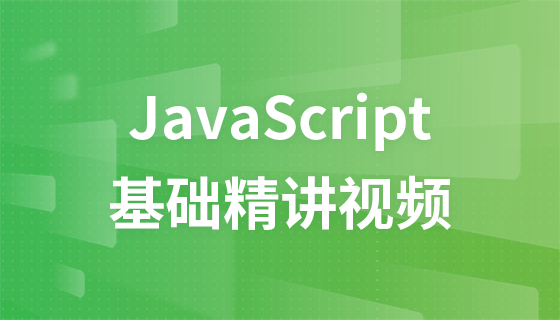
我喜欢在JS中更改函数执行上下文的指向,也称为 this 指向。
例如,咱们可以在类数组对象上使用数组方法:
const reduce = Array.prototype.reduce;
function sumArgs() {
return reduce.call(arguments, (sum, value) => {
return sum += value;
});
}
sumArgs(1, 2, 3); // => 6另一方面,this 很难把握。
咱们经常会发现自己用的 this 指向不正确。下面的教你如何简单地将 this 绑定到所需的值。
【相关课程推荐:JavaScript视频教程】
在开始之前,我需要一个辅助函数execute(func),它仅执行作为参数提供的函数。
function execute(func) {
return func();
}
execute(function() { return 10 }); // => 10现在,继续理解围绕this错误的本质:方法分离。
1. 方法分离问题
假设有一个类Person包含字段firstName和lastName。此外,它还有一个方法getFullName(),该方法返回此人的全名。如下所示:
function Person(firstName, lastName) {
this.firstName = firstName;
this.lastName = lastName;
this.getFullName = function() {
this === agent; // => true
return `${this.firstName} ${this.lastName}`;
}
}
const agent = new Person('前端', '小智');
agent.getFullName(); // => '前端 小智'可以看到Person函数作为构造函数被调用:new Person('前端', '小智')。 函数内部的 this 表示新创建的实例。
getfullname()返回此人的全名:'前端 小智'。正如预期的那样,getFullName()方法内的 this 等于agent。
如果辅助函数执行agent.getFullName方法会发生什么:
execute(agent.getFullName); // => 'undefined undefined'
执行结果不正确:'undefined undefined',这是 this 指向不正确导致的问题。
现在在getFullName() 方法中,this的值是全局对象(浏览器环境中的 window )。 this 等于 window,${window.firstName} ${window.lastName} 执行结果是 'undefined undefined'。
发生这种情况是因为在调用execute(agent.getFullName)时该方法与对象分离。 基本上发生的只是常规函数调用(不是方法调用):
execute(agent.getFullName); // => 'undefined undefined' // 等价于: const getFullNameSeparated = agent.getFullName; execute(getFullNameSeparated); // => 'undefined undefined'
这个就是所谓的方法从它的对象中分离出来,当方法被分离,然后执行时,this 与原始对象没有连接。
1、为了确保方法内部的this指向正确的对象,必须这样做
2、以属性访问器的形式执行方法:agent.getFullName()或者静态地将this绑定到包含的对象(使用箭头函数、.bind()方法等)
方法分离问题,以及由此导致this指向不正确,一般会在下面的几种情况中出现:
回调
// `methodHandler()`中的`this`是全局对象 setTimeout(object.handlerMethod, 1000);
在设置事件处理程序时
// React: `methodHandler()`中的`this`是全局对象
<button onClick={object.handlerMethod}>
Click me
</button>接着介绍一些有用的方法,即如果方法与对象分离,如何使this指向所需的对象。
2. 关闭上下文
保持this指向类实例的最简单方法是使用一个额外的变量self:
function Person(firstName, lastName) {
this.firstName = firstName;
this.lastName = lastName;
const self = this;
this.getFullName = function() {
self === agent; // => true
return `${self.firstName} ${self.lastName}`;
}
}
const agent = new Person('前端', '小智');
agent.getFullName(); // => '前端 小智'
execute(agent.getFullName); // => '前端 小智'getFullName()静态地关闭self变量,有效地对this进行手动绑定。
现在,当调用execute(agent.getFullName)时,一切工作正常,因为getFullName()方法内 this 总是指向正确的值。
3. 使用箭头函数
有没有办法在没有附加变量的情况下静态绑定this? 是的,这正是箭头函数的作用。
使用箭头函数重构Person:
function Person(firstName, lastName) {
this.firstName = firstName;
this.lastName = lastName;
this.getFullName = () => `${this.firstName} ${this.lastName}`;
}
const agent = new Person('前端', '小智');
agent.getFullName(); // => '前端 小智'
execute(agent.getFullName); // => '前端 小智'箭头函数以词法方式绑定this。 简单来说,它使用来自其定义的外部函数this的值。
建议在需要使用外部函数上下文的所有情况下都使用箭头函数。
4. 绑定上下文
现在让咱们更进一步,使用ES6中的类重构Person。
class Person {
constructor(firstName, lastName) {
this.firstName = firstName;
this.lastName = lastName;
}
getFullName() {
return `${this.firstName} ${this.lastName}`;
}
}
const agent = new Person('前端', '小智');
agent.getFullName(); // => '前端 小智'
execute(agent.getFullName); // => 'undefined undefined'不幸的是,即使使用新的类语法,execute(agent.getFullName)仍然返回“undefined undefined”。
在类的情况下,使用附加的变量self或箭头函数来修复this的指向是行不通的。
但是有一个涉及bind()方法的技巧,它将方法的上下文绑定到构造函数中:
class Person {
constructor(firstName, lastName) {
this.firstName = firstName;
this.lastName = lastName;
this.getFullName = this.getFullName.bind(this);
}
getFullName() {
return `${this.firstName} ${this.lastName}`;
}
}
const agent = new Person('前端', '小智');
agent.getFullName(); // => '前端 小智'
execute(agent.getFullName); // => '前端 小智'构造函数中的this.getFullName = this.getFullName.bind(this)将方法getFullName()绑定到类实例。
execute(agent.getFullName) 按预期工作,返回'前端 小智'。
5. 胖箭头方法
bind 方式有点太过冗长,咱们可以使用胖箭头的方式:
class Person {
constructor(firstName, lastName) {
this.firstName = firstName;
this.lastName = lastName;
}
getFullName = () => {
return `${this.firstName} ${this.lastName}`;
}
}
const agent = new Person('前端', '小智');
agent.getFullName(); // => '前端 小智'
execute(agent.getFullName); // => '前端 小智'胖箭头方法getFullName =() =>{…}绑定到类实例,即使将方法与其对象分离。
这种方法是在类中绑定this的最有效和最简洁的方法。
6. 总结
与对象分离的方法会产生 this 指向不正确问题。静态地绑定this,可以手动使用一个附加变量self来保存正确的上下文对象。然而,更好的替代方法是使用箭头函数,其本质上是为了在词法上绑定this。
在类中,可以使用bind()方法手动绑定构造函数中的类方法。当然如果你不用使用 bind 这种冗长方式,也可以使用简洁方便的胖箭头表示方法。
原文:https://github.com/valentinogagliardi/Little-JavaScript-Book/blob/v1.0.0/manuscript/chapter5.md
本文来自 js教程 栏目,欢迎学习!
以上是5种正确处理JS的this指向的方式的详细内容。更多信息请关注PHP中文网其他相关文章!



